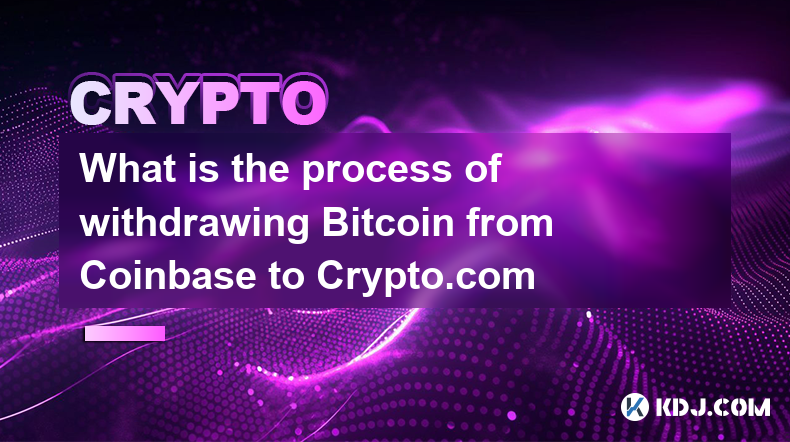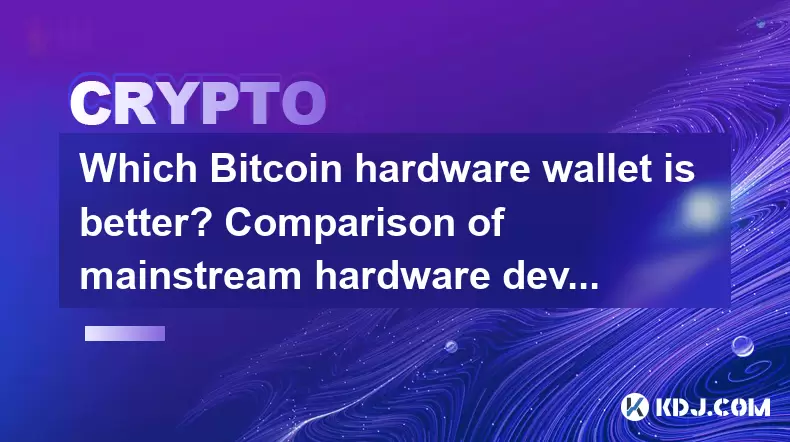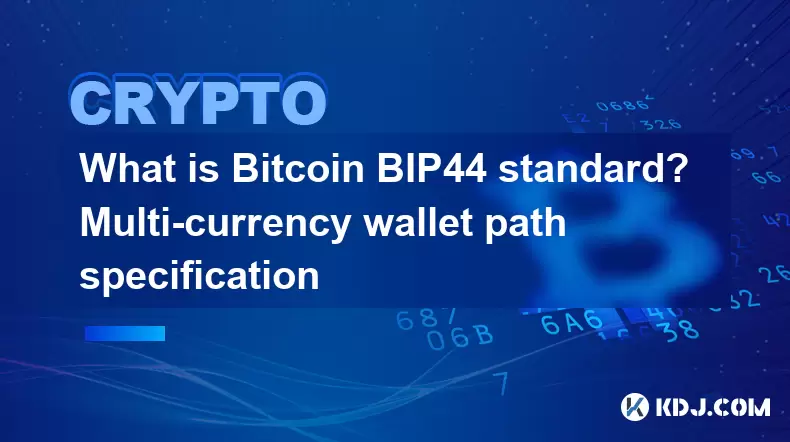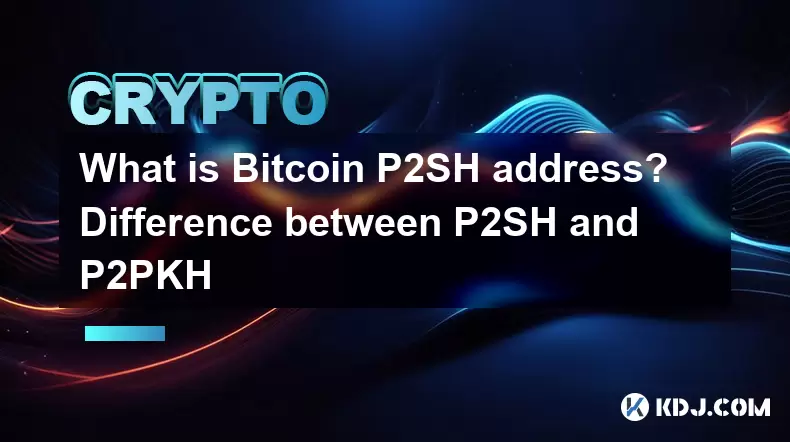-
 Bitcoin
Bitcoin $108,400.6277
0.97% -
 Ethereum
Ethereum $2,504.0387
2.68% -
 Tether USDt
Tether USDt $1.0001
-0.02% -
 XRP
XRP $2.2145
1.44% -
 BNB
BNB $655.3499
0.97% -
 Solana
Solana $153.4879
1.74% -
 USDC
USDC $0.9999
0.00% -
 TRON
TRON $0.2765
0.71% -
 Dogecoin
Dogecoin $0.1697
3.65% -
 Cardano
Cardano $0.5800
2.50% -
 Hyperliquid
Hyperliquid $39.8245
5.84% -
 Bitcoin Cash
Bitcoin Cash $504.0777
2.35% -
 Sui
Sui $2.9175
3.56% -
 Chainlink
Chainlink $13.8028
2.96% -
 UNUS SED LEO
UNUS SED LEO $9.0790
-0.02% -
 Avalanche
Avalanche $18.8435
4.63% -
 Stellar
Stellar $0.2412
0.85% -
 Toncoin
Toncoin $2.9183
2.29% -
 Shiba Inu
Shiba Inu $0.0...01191
2.87% -
 Litecoin
Litecoin $88.1447
2.18% -
 Hedera
Hedera $0.1532
3.45% -
 Monero
Monero $312.4001
0.36% -
 Polkadot
Polkadot $3.5696
4.83% -
 Bitget Token
Bitget Token $4.6313
-0.14% -
 Dai
Dai $0.9998
-0.02% -
 Ethena USDe
Ethena USDe $1.0003
0.00% -
 Uniswap
Uniswap $7.4330
3.96% -
 Pepe
Pepe $0.0...01041
9.01% -
 Aave
Aave $278.6912
6.80% -
 Pi
Pi $0.5337
-0.21%
What is the process of withdrawing Bitcoin from Coinbase to Crypto.com
To withdraw Bitcoin from Coinbase to Crypto.com, verify both accounts, initiate the transfer on Coinbase, and wait for blockchain confirmation before the funds appear in your Crypto.com account.
Apr 03, 2025 at 06:07 am

Withdrawing Bitcoin from Coinbase to Crypto.com involves several steps to ensure a smooth and secure transaction. First, you need to ensure that both your Coinbase and Crypto.com accounts are fully verified and in good standing. Next, you will need to initiate the withdrawal from Coinbase, specifying the amount of Bitcoin you wish to transfer and providing the Crypto.com deposit address. After initiating the withdrawal, you will need to wait for the transaction to be processed and confirmed on the Bitcoin blockchain. Once the transaction is confirmed, the Bitcoin will appear in your Crypto.com account, ready for use or further transactions.
Preparing Your Accounts
Before you can withdraw Bitcoin from Coinbase to Crypto.com, you need to ensure that both accounts are properly set up and verified. Start by logging into your Coinbase account and verifying that your identity has been confirmed. This usually involves submitting personal identification documents and waiting for approval. Similarly, log into your Crypto.com account and ensure that your identity verification is complete. Both platforms require this step to comply with regulatory standards and to protect your assets. Once both accounts are verified, you can proceed with the withdrawal process.
Initiating the Withdrawal from Coinbase
To begin the withdrawal process, log into your Coinbase account and navigate to the "Send/Receive" section. Click on "Send" and select Bitcoin as the cryptocurrency you want to withdraw. Enter the amount of Bitcoin you wish to transfer. Next, you will need to provide the destination address, which is the Bitcoin deposit address from your Crypto.com account. To obtain this address, log into your Crypto.com account, go to the "Accounts" section, select Bitcoin, and click on "Deposit." Copy the provided Bitcoin address and paste it into the "Recipient" field on Coinbase. Double-check the address to avoid any errors, as sending Bitcoin to the wrong address can result in permanent loss of funds.
Confirming the Withdrawal on Coinbase
After entering the correct Bitcoin address and the amount you wish to withdraw, review the transaction details carefully. Coinbase will display the network fee associated with the transaction, which you should also review. Once you are satisfied with the details, click on "Send" to initiate the withdrawal. Coinbase will prompt you to confirm the transaction using two-factor authentication (2FA) if you have it enabled. Enter the 2FA code and confirm the withdrawal. At this point, Coinbase will process the transaction and broadcast it to the Bitcoin network.
Waiting for Blockchain Confirmation
After Coinbase processes your withdrawal request, the transaction will be broadcast to the Bitcoin network. The Bitcoin network operates on a decentralized system where transactions are verified by miners and added to the blockchain. This process can take anywhere from a few minutes to several hours, depending on network congestion and the transaction fee you paid. You can track the progress of your transaction using a Bitcoin blockchain explorer by entering the transaction ID (TXID) provided by Coinbase. Once the transaction receives the required number of confirmations (usually six), it is considered complete and irreversible.
Receiving Bitcoin on Crypto.com
Once the transaction is confirmed on the Bitcoin blockchain, the Bitcoin will be credited to your Crypto.com account. You can check the status of your deposit by logging into your Crypto.com account and navigating to the "Accounts" section. Select Bitcoin, and you should see the incoming transaction listed as "Pending" until it is fully confirmed. After the confirmation, the status will change to "Completed," and the Bitcoin will be available in your account balance. You can now use the Bitcoin for trading, staking, or any other activities supported by Crypto.com.
Common Questions and Answers
Q: How long does it take to withdraw Bitcoin from Coinbase to Crypto.com?
A: The withdrawal process can take anywhere from a few minutes to several hours. The time depends on the Bitcoin network's congestion and the transaction fee you paid. Once the transaction is broadcast, it typically requires six confirmations on the blockchain, which can take around an hour under normal conditions.
Q: What fees are involved in withdrawing Bitcoin from Coinbase to Crypto.com?
A: Coinbase charges a network fee for Bitcoin withdrawals, which varies based on network congestion. Additionally, Crypto.com may charge a deposit fee, although this is less common. Always check the fee structure on both platforms before initiating a withdrawal.
Q: Is it safe to withdraw Bitcoin from Coinbase to Crypto.com?
A: Yes, it is safe as long as you follow the correct procedures and double-check the destination address. Both Coinbase and Crypto.com are reputable platforms with robust security measures. However, always ensure that your accounts are secure and that you use two-factor authentication.
Q: Can I cancel a Bitcoin withdrawal after it has been initiated?
A: Once a Bitcoin withdrawal is initiated and broadcast to the network, it cannot be canceled. It is crucial to review all transaction details carefully before confirming the withdrawal.
Q: What should I do if I encounter issues with the withdrawal?
A: If you encounter issues, first check the transaction status on a blockchain explorer using the TXID. If the transaction is stuck, contact Coinbase support for assistance. If the Bitcoin does not appear in your Crypto.com account after confirmation, reach out to Crypto.com support for help.
Disclaimer:info@kdj.com
The information provided is not trading advice. kdj.com does not assume any responsibility for any investments made based on the information provided in this article. Cryptocurrencies are highly volatile and it is highly recommended that you invest with caution after thorough research!
If you believe that the content used on this website infringes your copyright, please contact us immediately (info@kdj.com) and we will delete it promptly.
- Cryptos, Web3, Growth: What's Hot in the Streets (and on the Blockchain) for 2025
- 2025-06-30 06:30:12
- XRPL Validator Vet Sets the Record Straight: XRP, Not Your Typical US-Based Crypto
- 2025-06-30 06:30:12
- BNB, Maxwell Fork, and BSC Mainnet: Navigating Speed, Stability, and Geopolitical Tides
- 2025-06-30 06:50:12
- Qubetics, Render, Cronos: The Altcoins Poised to Pop in the Next Bull Run
- 2025-06-30 06:54:04
- Web3 AI, Bitcoin Cash, and Cardano: Crypto's Rising Stars in 2025
- 2025-06-30 06:57:13
- Bitcoin, Exchanges, and Institutions: A New Era of Crypto Dynamics
- 2025-06-30 06:35:12
Related knowledge

Which Bitcoin hardware wallet is better? Comparison of mainstream hardware devices
Jun 16,2025 at 02:08am
What Is a Bitcoin Hardware Wallet?A Bitcoin hardware wallet is a physical device designed to securely store the private keys associated with your cryptocurrency holdings. Unlike software wallets, which are more vulnerable to online threats, hardware wallets keep private keys offline, significantly reducing the risk of unauthorized access. These devices ...

What are Bitcoin non-custodial wallets? Self-controlled private key recommendation
Jun 16,2025 at 11:29pm
Understanding Bitcoin Non-Custodial WalletsA Bitcoin non-custodial wallet is a type of digital wallet where users retain full control over their private keys. Unlike custodial wallets, which are managed by third-party services such as exchanges, non-custodial wallets ensure that only the user can access and manage their funds. This means no intermediary...

What is Bitcoin BIP44 standard? Multi-currency wallet path specification
Jun 15,2025 at 04:08pm
Understanding the BIP44 Standard in Bitcoin and CryptocurrencyThe BIP44 standard, which stands for Bitcoin Improvement Proposal 44, is a widely adopted hierarchical deterministic wallet structure used across various cryptocurrencies. It defines a structured path format that enables wallets to support multiple currencies while maintaining consistency and...

What is Bitcoin HD wallet? Advantages of layered deterministic wallets
Jun 16,2025 at 03:56pm
Understanding Bitcoin HD WalletsA Bitcoin HD wallet, or Hierarchical Deterministic wallet, is a type of cryptocurrency wallet that generates multiple keys and addresses from a single seed phrase. Unlike traditional wallets that create random private keys for each transaction, an HD wallet follows a structured hierarchy to derive keys in a deterministic ...

Is Bitcoin zero-confirmation transaction risky? Zero-confirmation usage scenarios
Jun 15,2025 at 03:57am
Understanding Zero-Confirmation Transactions in BitcoinBitcoin zero-confirmation transactions, often referred to as 'unconfirmed transactions,' are those that have been broadcast to the network but have not yet been included in a block. This means they have not received any confirmations from miners. While these transactions can be useful in certain con...

What is Bitcoin P2SH address? Difference between P2SH and P2PKH
Jun 16,2025 at 09:49pm
Understanding Bitcoin P2SH AddressesA Pay-to-Script-Hash (P2SH) address in the Bitcoin network is a type of address that allows users to send funds to a script hash rather than directly to a public key hash, as seen in earlier address formats. This innovation was introduced through BIP 16, enhancing flexibility and enabling more complex transaction type...

Which Bitcoin hardware wallet is better? Comparison of mainstream hardware devices
Jun 16,2025 at 02:08am
What Is a Bitcoin Hardware Wallet?A Bitcoin hardware wallet is a physical device designed to securely store the private keys associated with your cryptocurrency holdings. Unlike software wallets, which are more vulnerable to online threats, hardware wallets keep private keys offline, significantly reducing the risk of unauthorized access. These devices ...

What are Bitcoin non-custodial wallets? Self-controlled private key recommendation
Jun 16,2025 at 11:29pm
Understanding Bitcoin Non-Custodial WalletsA Bitcoin non-custodial wallet is a type of digital wallet where users retain full control over their private keys. Unlike custodial wallets, which are managed by third-party services such as exchanges, non-custodial wallets ensure that only the user can access and manage their funds. This means no intermediary...

What is Bitcoin BIP44 standard? Multi-currency wallet path specification
Jun 15,2025 at 04:08pm
Understanding the BIP44 Standard in Bitcoin and CryptocurrencyThe BIP44 standard, which stands for Bitcoin Improvement Proposal 44, is a widely adopted hierarchical deterministic wallet structure used across various cryptocurrencies. It defines a structured path format that enables wallets to support multiple currencies while maintaining consistency and...

What is Bitcoin HD wallet? Advantages of layered deterministic wallets
Jun 16,2025 at 03:56pm
Understanding Bitcoin HD WalletsA Bitcoin HD wallet, or Hierarchical Deterministic wallet, is a type of cryptocurrency wallet that generates multiple keys and addresses from a single seed phrase. Unlike traditional wallets that create random private keys for each transaction, an HD wallet follows a structured hierarchy to derive keys in a deterministic ...

Is Bitcoin zero-confirmation transaction risky? Zero-confirmation usage scenarios
Jun 15,2025 at 03:57am
Understanding Zero-Confirmation Transactions in BitcoinBitcoin zero-confirmation transactions, often referred to as 'unconfirmed transactions,' are those that have been broadcast to the network but have not yet been included in a block. This means they have not received any confirmations from miners. While these transactions can be useful in certain con...

What is Bitcoin P2SH address? Difference between P2SH and P2PKH
Jun 16,2025 at 09:49pm
Understanding Bitcoin P2SH AddressesA Pay-to-Script-Hash (P2SH) address in the Bitcoin network is a type of address that allows users to send funds to a script hash rather than directly to a public key hash, as seen in earlier address formats. This innovation was introduced through BIP 16, enhancing flexibility and enabling more complex transaction type...
See all articles

























































































